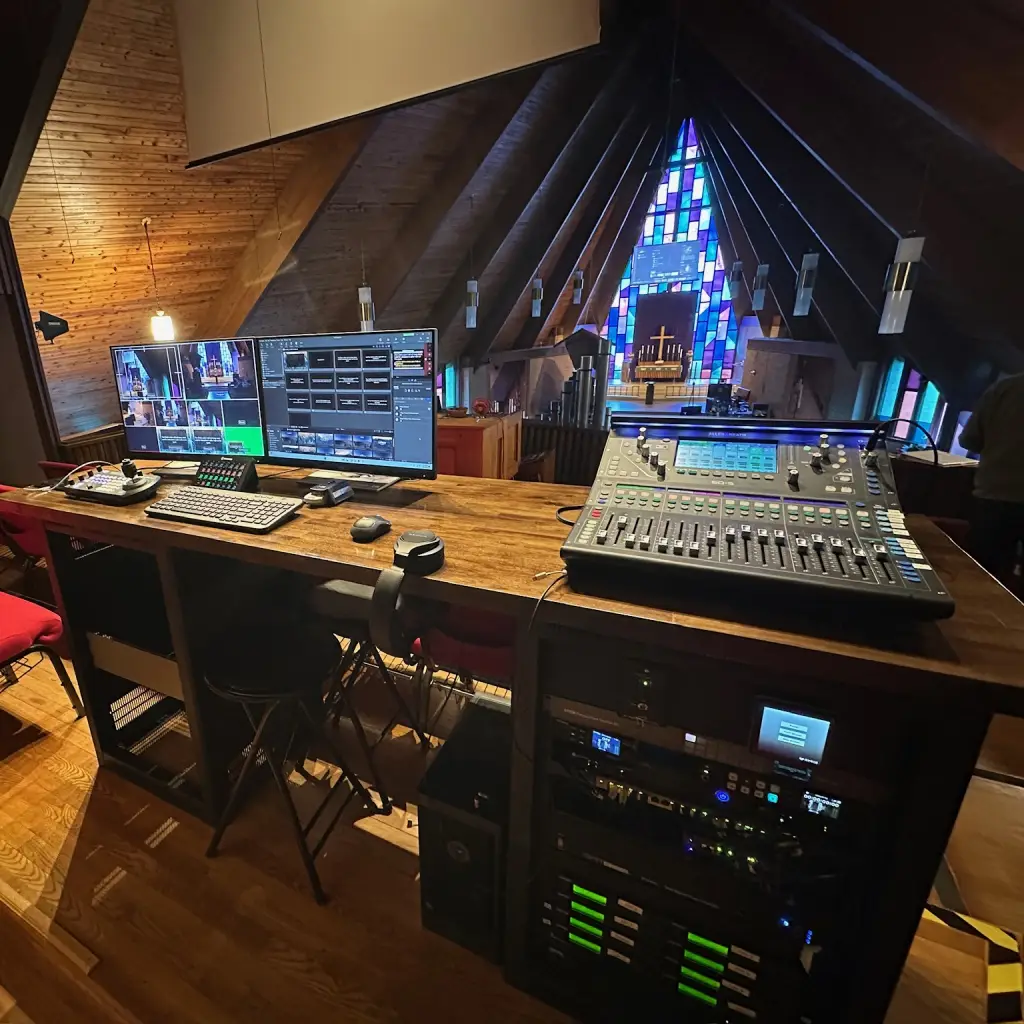
The world around us has gotten more crowded, and you might not have even noticed.
If your home has a wireless network that has slowly added more cell phones, wireless TVs, iPads, computers, smart watches, appliances connected to wireless, video doorbells, and more, you probably noticed how your devices slowed down or struggled to get a signal, or dropped signal in certain parts of the home. That network is behaving differently than it did before.
Well, the same can be said for the world outside your home, and it definitely impacts the AV technology you rely on.
What's Really Happening in Your RF Environment
RF environment – that's the invisible world of radio frequencies surrounding us everywhere we go. Think of it like traffic on invisible highways in the air. Everything wireless – from your cell phone to emergency response systems and your church's wireless microphones – is competing for the same airways to transmit information.
Even when devices operate on different frequencies, they create "speed bumps" that can interfere with each other's signals. It's not always direct interference, but the cumulative effect of all this wireless activity creates a much more challenging environment than most people realize.
We live in a world where everything is going wireless. WiFi, cellular, emergency response, and all your wireless AV technology – microphones, assisted listening devices, video transmission, and lighting control – are all competing for clean signal paths.
The Reality Check: It's Not Working Like It Used To
Here's what we've been seeing: clients expecting the cheapest microphones to work as well as they did five years ago. But the environment has changed dramatically.
We used to say you could get reliable performance with 30 feet of line of sight, and you could test that limit at 50 feet. Not anymore. Now, everyone has a cellphone in their pocket. Although it operates on a different frequency than your microphones, it still creates interference that affects your signal.
In downtown Charlotte or Raleigh? Good luck getting the wrong equipment to work reliably. When you're next to an apartment complex with 1,000 people, each with multiple wireless devices, it radically changes what you can expect from your equipment... unless it is the right equipment set up correctly.
I walked into a church built next door to an electrical substation, and they were wondering why they were having all sorts of issues with their wireless systems. The environment itself was the problem, not the equipment.

When the Environment Gets Extreme
Bank of America Stadium on game day is the perfect example of what we're dealing with. You've got 75,000 people, each carrying multiple wireless devices. Emergency response systems are active. Stadium operations are running wireless control systems. Media crews have professional wireless equipment. The RF environment is so congested that even professional-grade systems struggle to operate effectively.
I've seen it happen where a police officer left his car running with the antenna on and moved within 15 feet of a rack with a wireless system. It inadvertently jammed the signals, creating a complete traffic jam for the AV equipment. The RF transmission environment is that sensitive now.
The Regulatory Reality
The Federal Communications Commission has made things more complicated by restricting the operation of wireless microphones. Wireless microphones are no longer allowed to operate in the 600-700 UHF band – it's actually illegal now. Some spectrums aren't managed by the FCC, but you're operating at your own risk.
You must select your frequency band based on your region, down to the city level. What works in rural areas might be completely unusable in urban environments.
Breaking Through the Noise
The solution isn't to give up on wireless – wireless is the future. I be
lieve it will one day surpass even fiber optics. We haven't yet unlocked the full potential of wireless technology.
The key is understanding that you need three things to succeed in today's RF environment:
Strategic Planning: You can't simply purchase equipment and expect it to work. You need to understand your specific environment and plan accordingly.
The Right Technology: This refers to professional-grade equipment designed for challenging RF environments, including proper antenna systems and signal boosters when necessary. An antenna combiner that boosts the signal is no longer a luxury – it's often a necessity.
Regular Spectrum Analysis: Each environment is different, and it changes over time. A spectrum analysis identifies the specifics in your space that lay out the plan for what is needed.

Getting It Right From the Start
If you're in a less crowded frequency band, you may be able to get away with basic equipment for now. However, relying on that is risky when your Sunday morning service or an important presentation depends on reliable wireless performance.
The clients who get this right are the ones who plan for their actual environment, not the ideal testing conditions that equipment manufacturers demonstrate. They invest in professional-grade wireless systems designed to cut through the noise and maintain clean signals even when the invisible airways are crowded.
At RYGID AV, we recognize the distinction between systems that struggle with today's RF challenges and those that perform reliably, regardless of environmental conditions. The key is matching your wireless technology to your actual operating environment – and understanding that environment is more complex than ever before.
Additionally, all wireless transmissions must now be digitally encoded for security reasons. Look out for our upcoming article on cybersecurity, which will explore the intersection of wireless transmission and digital security.
Need help navigating your RF environment? Contact RYGID AV for a consultation and spectrum analysis to determine the right wireless solutions for your specific location and usage requirements.
RYGID AV | 122 Backstretch Ln., Mooresville, NC 28117
(980) 263-9194 | info@rygidav.com
Where to Contact + Connect with RYGID AV
Mooresville, NC 28117

.webp)